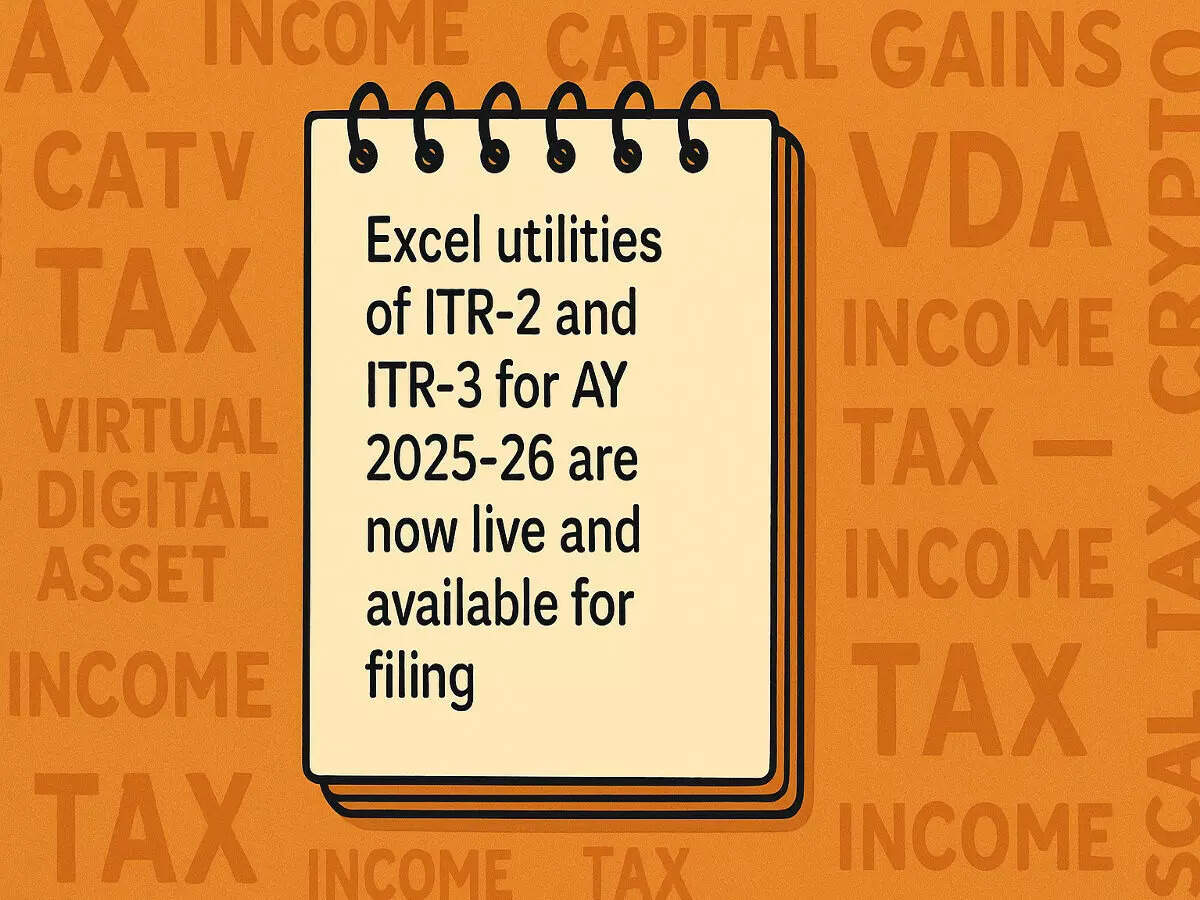ITR-2 & ITR-3 Excel Utility Released: File Your Capital Gains & Crypto Taxes!

Income Tax Department Releases Excel Utilities for ITR-2 and ITR-3 Forms for FY 2024-25
The Income Tax Department has launched Excel utilities for the ITR-2 and ITR-3 forms, enabling taxpayers with capital gains, cryptocurrency income, and other sources to start filing their income tax returns (ITRs) today. The deadline for filing ITRs for the financial year 2024-25 (assessment year 2025-26) has been extended to September 15, 2025. Previously, only ITR-1 and ITR-4 forms were available, catering to a limited group of taxpayers with specific income types.
Excel Utilities Now Available for Download
Currently, only the Excel utilities for ITR-2 and ITR-3 have been made available. Taxpayers intending to file their returns through the online e-filing portal will need to wait, as this feature has not yet been activated. The Income Tax Department is expected to announce the online filing capability soon.
On July 11, 2025, the Income Tax Department announced via X (formerly Twitter): “Attention Taxpayers! Excel Utilities of ITR-2 and ITR-3 for AY 2025-26 are now live and available for filing.”
Understanding Excel-Based ITR Utilities
To access the ITR-2 and ITR-3 utilities, visit the download section of the Income Tax Department’s e-filing portal. After downloading, you will receive a zipped Windows file. Extract the contents and open the Excel file, which includes various schedules and fields for you to input your information as required. Once completed, log in to the ITR e-filing portal to upload and submit your return. Remember to verify your submitted ITR within 30 days.
Who is Eligible to File ITR-2?
As of July 11, 2025, individuals or Hindu Undivided Families (HUFs) can file ITR-2 if they meet the following criteria:
- They are not eligible to file ITR-1 (Sahaj).
- They do not have income from business or professional activities, including:
- Interest
- Salary
- Bonuses
- Commissions or remuneration from a partnership firm
- They have income from another person, such as a spouse or minor child, that needs to be included with their income.
According to SR Patnaik, Partner at Cyril Amarchand Mangaldas, ITR-2 is specifically for individuals and HUFs without business or professional income. Those eligible for ITR-1, which applies to individuals with income from salaries, house property (limited to one property), and other sources (excluding lottery winnings), cannot file ITR-2.
Key Updates to ITR-2 for FY 2024-25
The ITR-2 form has undergone several important updates, including:
- A new schedule for capital gains, distinguishing between gains before and after July 23, 2024, following changes in the Finance Act, 2024.
- Allowance for capital loss on share buybacks if the corresponding dividend income is reported as income from other sources (effective from October 1, 2024).
- Increased asset and liability reporting threshold to ₹1 crore of total income.
- Enhanced reporting requirements for deductions under sections 80C and 10(13A).
- Inclusion of TDS section codes in Schedule-TDS.
Aseem Mowar, Tax Partner at EY India, noted that these changes simplify the filing process for taxpayers with incomes between ₹50 lakh and ₹1 crore by eliminating the need to report assets and liabilities. The form now requires taxpayers to specify the section under which TDS was deducted, improving transparency.
Who Should File ITR-3?
Chartered Accountant Pranesh Jain explains that ITR-3 is intended for individuals and HUFs who earn income from business or professional activities, along with other income sources. This includes:
- Business or professional income (excluding income taxed on a presumptive basis).
- Partnership income (non-LLP).
- Income from derivatives trading and unlisted shares.
- Capital gains (long-term capital gains from shares up to ₹1,25,000 can be reported in ITR-4).
- Other income sources.
In essence, ITR-3 is applicable when a taxpayer has both business income and income from other sources, such as capital gains or cryptocurrency transactions.
Key Updates to ITR-3 for FY 2024-25
The ITR-3 form has also seen significant updates, including:
- A new schedule for capital gains, differentiating between gains before and after July 23, 2024.
- Allowance for capital loss on share buybacks if corresponding dividend income is reported as income from other sources (effective from October 1, 2024).
- Increased asset and liability reporting threshold to ₹1 crore of total income.
- Addition of Section 44BBC references for cruise business operations.
- Enhanced reporting requirements for deductions under sections 80C and 10(13A).
- Inclusion of TDS section codes in Schedule-TDS.
According to Gopal Bohra, Partner at N. A. Shah Associates LLP, the most notable change in ITR-3 is the increased threshold for reporting assets and liabilities, now set at ₹1 crore. This adjustment simplifies the filing process for many taxpayers whose total income falls between ₹50 lakh and ₹1 crore.
Conclusion
The release of the Excel utilities for ITR-2 and ITR-3 marks a significant step for taxpayers preparing to file their returns for FY 2024-25. With extended deadlines and updated forms, the Income Tax Department aims to streamline the filing process and enhance compliance. Taxpayers are encouraged to stay informed about the upcoming online filing capabilities and ensure timely submission of their returns.







